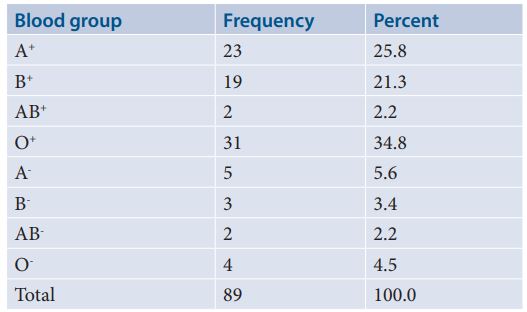Pattern of ABO and Rhesus Blood Group Distribution among Second Year Medical Students of Arsi University, Southeast Ethiopia
Abstract
Background and Aim: The genetics, inheritance patterns and disease susceptibility of blood group antigens, which are hereditary in nature, are crucial for transfusion safety. The purpose of the present study was to determine the frequency and distribution of both ABO and Rhesus blood types among second year medical students of Arsi University. Methodology: All second-year medical students at Arsi University participated in a cross-sectional study that was institutionally based. A structured questionnaire and a data collection sheet were used to obtain the socio-demographic data and blood group types of study participants. The blood samples were obtained by standard procedures and subjected to determination of ABO and Rhesus blood group using anti-sera by combined slide and test tube method. Each sample was tested for ABO and Rhesus status. The collected data were double entered into Epi-data version 3.1 and exported into SPSS version-22 for analysis. Descriptive statistics was used to calculate percentage frequencies of blood phenotype. The genotypic and allelic frequencies of the blood groups were calculated from the observed phenotypes under the assumption of Hardy-Weinberg equilibrium. Results: In the present study, one questionnaire was rejected for incompleteness, resulting in a response rate of 98.89%. The respondents had a mean age of 21.38 years (SD±0.898) and were mainly female (58.4%). The distribution of ABO blood group was; blood group O (39.3%); blood group A (31.5%); blood group B (24.7%) and blood group AB (4.5%). The proportions of Rhesus (D) positive and Rhesus (D) negative were 84.3% and 15.7%, respectively. Conclusion: The current study revealed that blood group O is the most frequent blood group among the ABO blood group system with dominant Rh positivity. This study along with other similar studies in other regions of the country will be useful for health planners to face medical emergencies.

Copyright (c) 2024 Leta Melaku, Bedasa Elias

This work is licensed under a Creative Commons Attribution-NonCommercial-NoDerivatives 4.0 International License.





